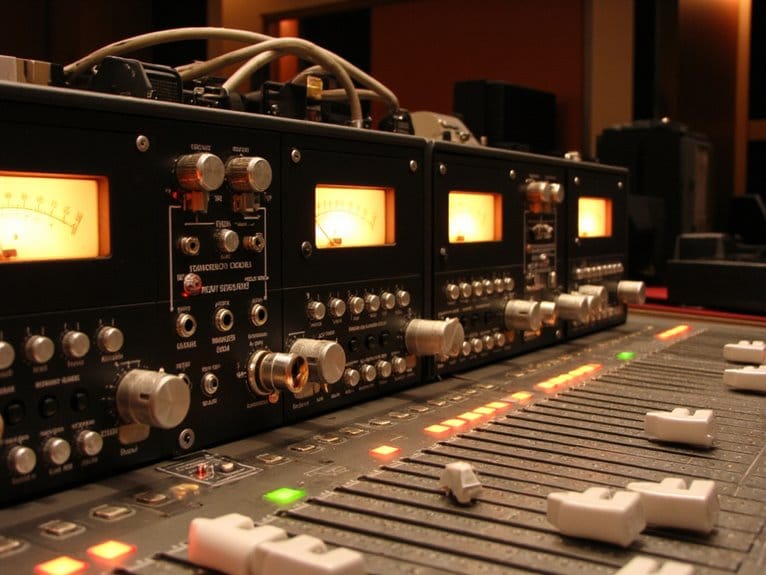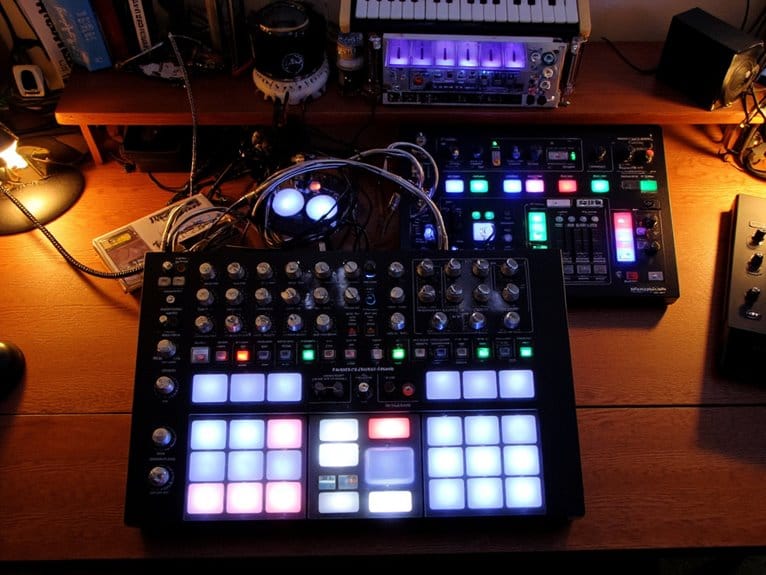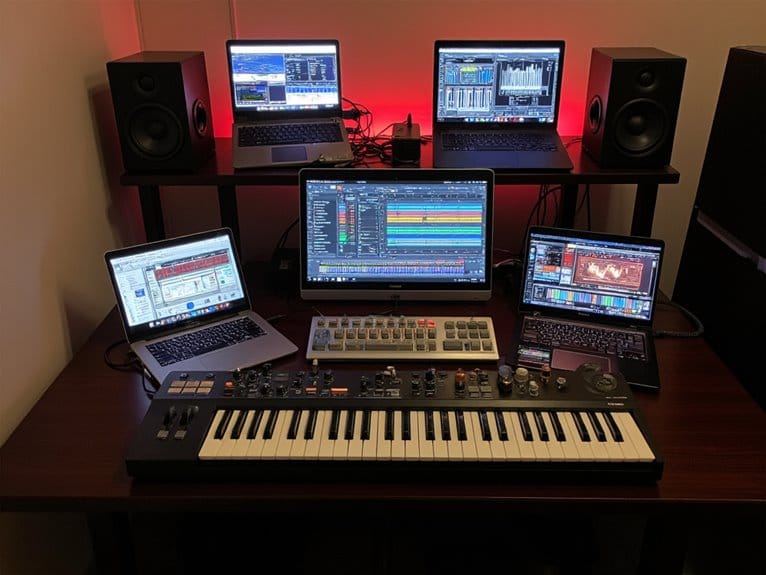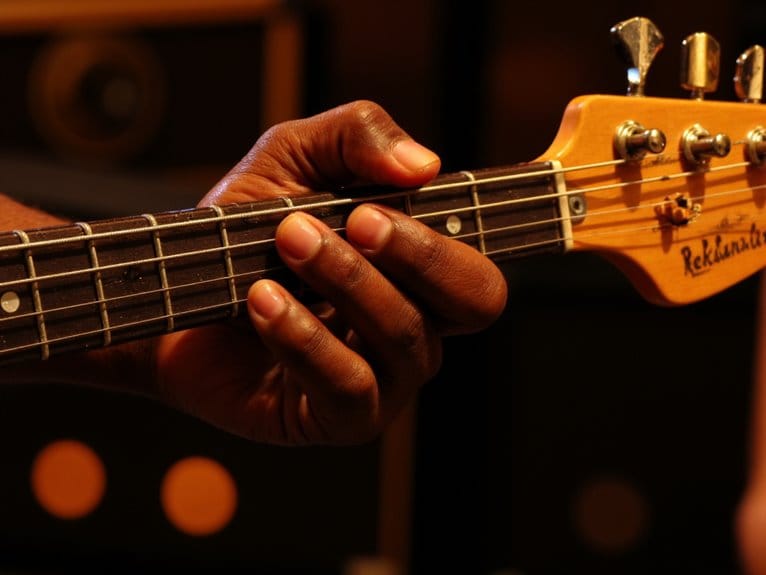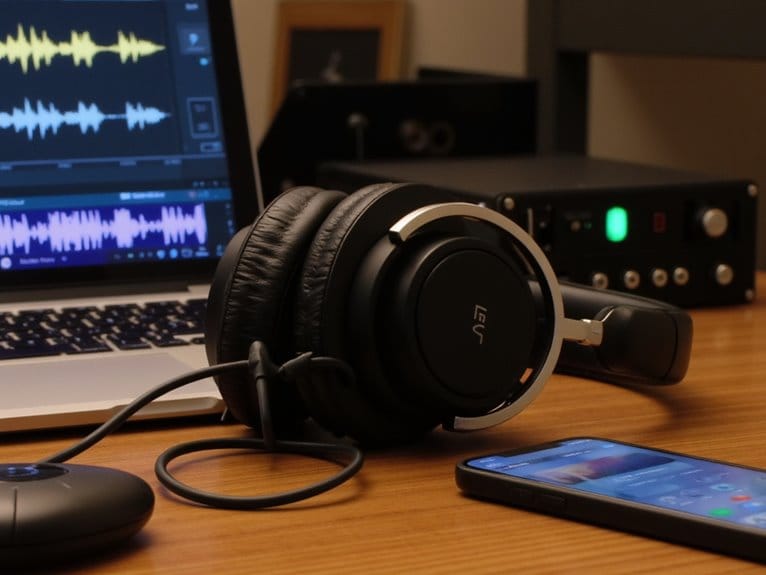Mix Bus Compression: Gluing Your Mix Together
Mix bus compression acts as the sonic glue that transforms your individual tracks into a cohesive, professional-sounding mix by applying gentle 1-3 dB of gain reduction across your entire stereo bus. You’ll want to choose between VCA compressors for transparency, optical units for smoothness, or tube-style for vintage warmth, then dial in moderate ratios around 2:1 to 4:1 with careful threshold adjustments between -2 dB to -12 dB. The magic happens when you preserve transients with 10-30 ms attack times while matching your release to the song’s tempo, creating that essential cohesive energy that separates amateur mixes from polished productions that command attention.
We are supported by our audience. When you purchase through links on our site, we may earn an affiliate commission, at no extra cost for you. Learn more.
Notable Insights
- Mix bus compression creates a “glue effect” that binds individual tracks together for a cohesive, unified sound.
- Use gentle settings with 2:1 to 4:1 ratios and aim for only 1-3 dB of gain reduction.
- Choose compressor types based on genre: VCA for transparency, FET for aggression, optical for smoothness.
- Apply compression early in the mixing process to help all subsequent decisions work cohesively together.
- Avoid over-compression above 3 dB reduction as it flattens dynamics and removes natural energy.
Understanding the Role and Purpose of Mix Bus Compression
Mix bus compression, the final layer of dynamics control in your signal chain, applies a stereo compressor across the entire mix bus to simultaneously affect every element in your production.
This compression technique serves as the unifying force that creates the coveted “glue effect,” transforming individual tracks into a cohesive sound that feels professionally polished. Unlike aggressive compression that destroys musical expression, mix bus compression works subtly, smoothing out dynamic inconsistencies while preserving the natural character of your audio mixing decisions.
I’ve found that this approach raises masked low-level details, adding richness and complexity without squashing transients. While some engineers apply it during the mastering stage, implementing mix bus compression earlier allows you to make mixing decisions that complement its unifying characteristics, ultimately delivering that sought-after professional cohesion.
Choosing the Right Compressor Type for Your Mix Bus
Different compressor topologies bring distinct sonic characteristics to your mix bus, and selecting the right type depends on your genre, mixing style, and the specific tonal qualities you’re seeking.
VCA compressors excel when you need transparent, clean compression that maintains clarity while providing excellent transient response, making them ideal for modern pop and electronic music.
FET compressors deliver aggressive character with fast attack times, perfect for rock genres requiring punch and energy.
Optical compressors offer smooth, natural compression with slower response times, excellent for preserving transients while adding warmth.
Vari-mu tube compressors provide vintage tonal coloration with musical saturation, perfect for adding cohesiveness without sacrificing dynamics.
Consider your mix’s dynamic range, genre requirements, and desired compressor characteristics when making your selection.
Essential Parameter Settings and Techniques
Once you’ve selected the right compressor type for your mix bus, the real artistry lies in dialing in parameters that enhance your mix’s cohesion without sacrificing its natural dynamics. Your threshold settings should typically fall between -2 dB and -12 dB, while ratio adjustments work best around 2:1 to 4:1 for transparent glue.
| Parameter | Conservative | Moderate |
|---|---|---|
| Threshold | -6 to -8 dB | -4 to -6 dB |
| Attack | 20-30 ms | 10-20 ms |
| Release | 100-200 ms | 50-100 ms |
Attack techniques favor slower settings around 10-30 ms to preserve transients, while release strategies should match your track’s tempo. Proper makeup gain compensates for compression without introducing artifacts, and monitoring impact guarantees you’re achieving 1-3 dB of subtle gain reduction that enhances rather than squashes your mix’s natural energy.
Common Pitfalls and How to Avoid Them
Even with perfect parameter settings dialed in, I’ve watched countless engineers sabotage their mix bus compression through predictable mistakes that can transform a cohesive, punchy mix into a lifeless, over-processed mess.
Over compression risks emerge when you’re hitting more than 3 dB of gain reduction, crushing your dynamic range retention and creating that dreaded flat sound. Your threshold adjustment strategies should focus on subtle touch, while transient preservation techniques require moderate attack times to avoid dulling drums.
Mix balance considerations become critical since your loudest elements drive the compressor’s behavior, and fader interaction awareness prevents you from accidentally triggering excessive gain reduction when adjusting levels post-compression.
On a final note
You’ve now got the foundational knowledge to tackle mix bus compression with confidence, though I’ll admit it took me years to truly grasp these concepts myself. Start conservatively with gentle 2:1 ratios and slow attack times, then trust your ears as you develop your technique. Remember, you’re not just compressing individual elements-you’re sculpting the cohesive sonic character that transforms separate tracks into a unified, professional-sounding mix that breathes together naturally.

